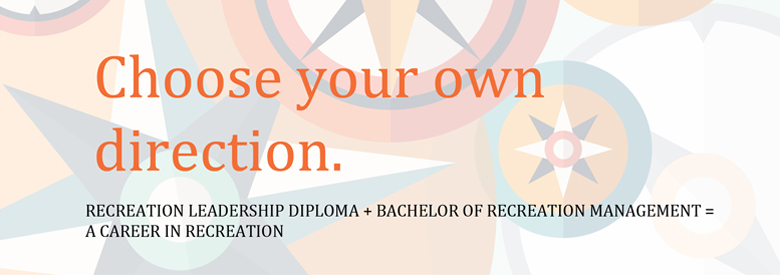2020 RECR 4400: Research Questions
“Why do young competitive athletes’ loose interest in their chosen sport? What can Phoenix Gymnastics do to increase the retention rates of competitive athletes?” – Gabriel Baron
This paper explores the reasons why young competitive athletes’ loose interest in their chosen sport; and what programs and practices Phoenix Gymnastics can implement to increase the retention rates of their competitive athletes.
The research findings showed that there were multiple major factors including , negative coaching styles, bullying, injury, depression, family economic situation, age of introduction into competitive stream sports, abuse (sexual, physical, emotional and verbal abuse) and public education that affected the retention rates of young competitive athletes. Through primary and secondary research, of those factors, three were found to be most relevant to Phoenix Gymnastics young competitive programs including, negative coaching styles, family economic situation and public education.
the recommendations proffered for Phoenix Gymnastics are; an increase in screening protocol for potential coaches to root out possible negative attributes; more funding allocated towards families in need of financial assistance; an increase in public education on the benefits and risks of competitive level training; and potential alternative programs for young competitive athletes to continue training at the club.
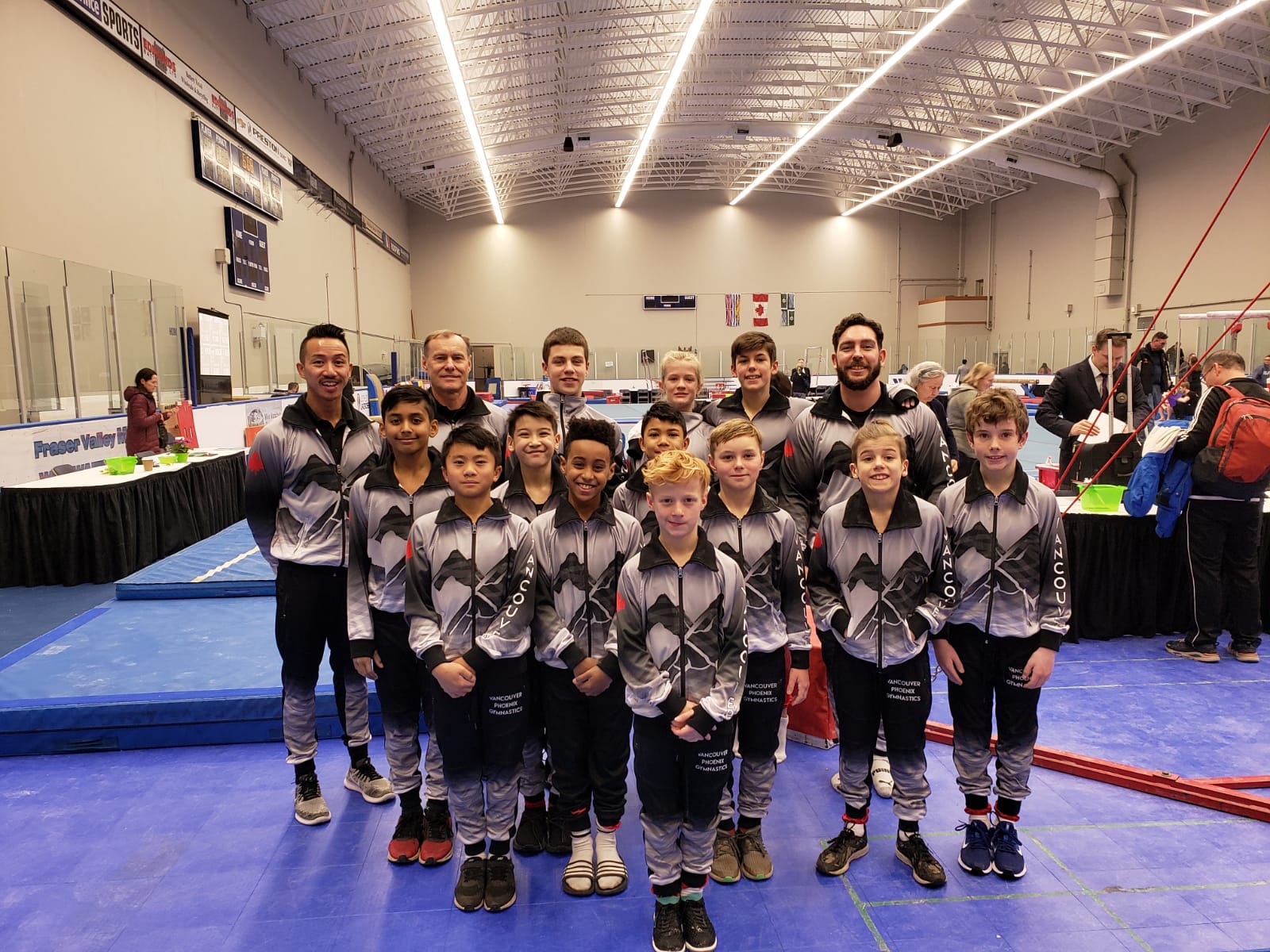
My Phoenix Gymnastics squad and I representing the club at the BC Winter Games Trials
References:
GymBC Technical Education Manager and Men’s Gymnastics Coordinator. (March 6, 2020). Personal interview.
Phoenix Gymnastics Men’s Head Coach. (March 4, 2020). Personal interview.
“What are the major causes of social isolation among youth and how can North Vancouver Recreation and Culture Commission address these causes?” – Adam Romanick
Youth across the North Shore are feeling the effects of social isolation, they are disengaging from social ties, institutional connections, and participate less in the community. This issue must be addressed for the good of the community. If not addressed, it could send ripples throughout the community.
North Vancouver’s population is aging. Without a good foundation of connected youth, who will grow up to be the adults that support the population, there is the potential that North Vancouver could lack the strong community it will desperately need. In order to the issue of youth social isolation, three of the many causes are addressed. First, excessive technology usage is taking youth away from their peers and absorbing them into screens that they use as escapes and as ways to disengage. Second, youth with physical and cognitive disabilities are some of the most isolated youth. While they do have resources in place the more we can support this group the more every other group of youth, as well as other age groups, will feel supported. Finally, the parenting style has shifted to a more overbearing, overprotective approach that has children losing the necessary skills they need to build strong connections. North Vancouver Recreation and Culture Commission is in a place where they can connect with youth and parents and help to address these issues. Recommendations to address youth social isolation include parenting workshops to educate parents on this phenomenon so they can support their child better. The incorporation of technology into social recreation opportunities, to draw youth away from screens and into other activities where the focus is on making connections. Finally, to include new social programming opportunities for youth and to expand on some leadership opportunities North Vancouver Recreation and Culture Commission already has in place. With the combined effort of parents, recreation professionals, and North Vancouver Recreation and Culture Commission there will be a shift in the dynamics of the community.
The below image is of myself and a co-worker after 2 months of summer camp. I had to crop the image to protect the privacy of the camper that was with us in the photo. However, the camper was with us in camp as long as I had worked for NVRC as a leader. he has Autism and is one of the nicest kids I have ever worked with. We worked with him every summer and connected with him to the point where he would ask to come to camp throughout the school year.
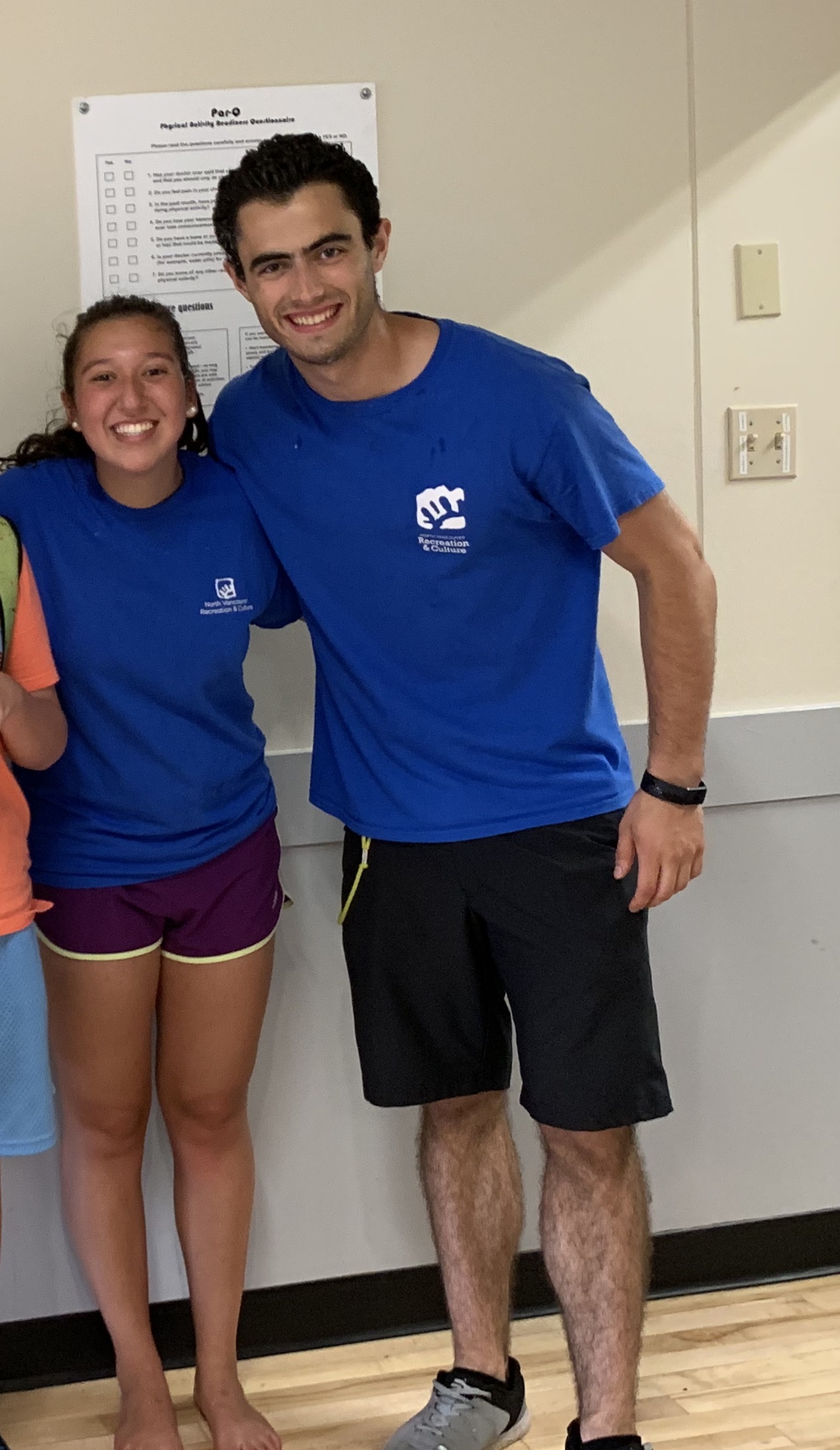
What is the value of unstructured play for children? And how can the City of New Westminster provide a supportive outdoor environment for unstructured play? – Dylan Myers
Unstructured play is not a new concept in recreation and leisure. Outdoor unstructured play and its benefits have been actualized by children for generations, although the concept of playing without guidelines may not have been specifically labeled as unstructured play. As childhood obesity and inactivity continue to rise in North America (Tremblay et al., 2015), unstructured play opportunities are essential to the development of children and can promote experiences that prepare children with the physical, social and psychological skills needed to succeed through their youth and adulthood (Canadian Public Health Association, 2018).
Outdoor unstructured play has the ability to create, discover, and explore without rules or guidelines (Help Me Grow, n.d.). This form of play consists of emerging oneself in a natural environment and restricting the boundaries placed on designated play areas. This fosters a variety of benefits as research from Statistics Canada state, "Children who report more time outdoors are more physically active and less sedentary, and display enhanced psychosocial health, compared with those who spend less time outdoors" (Larouche et al., 2016). Outdoor unstructured play removes the facilitation of adults within a child’s play and empowers children to create and imagine their own set of rules. This type of play provides the foundation for children to develop emotionally through problem-solving and curiosity and build on the skills of self-determination, self-esteem, and the ability to self-regulate (Patte, n.d.). In addition, unstructured play builds strength, balance, coordination, and cardiovascular fitness, without the rules and regulations that organized sports possesses (Patte, n.d.).
Unstructured play correlates with community recreation in a number of ways. On an organizational level, it has been discussed and promoted by the National Recreation and Parks Association, Canadian Parks and Recreation Association, and various British Columbian municipalities. This is evident in the article “Play Creates a Whole Child” by the NRPA, as it discusses the value of unstructured play in the overall health and well-being of children (National Recreation and Parks Association, 2017). Furthermore, the North Vancouver Recreation and Culture department posted a blog regarding the value of unstructured play and prides itself on promoting free play in the community (North Vancouver Recreation & Culture, 2017).
The correlation between unstructured play, overcoming the barriers to unstructured play and community recreation is highlighted in the Framework for Recreation in Canada as it states, “Ensure the provision of supportive physical and social environments that encourage participation in recreation and help to build strong, caring communities” (A Framework for Recreation in Canada 2015 Pathways to Wellbeing, 2015). This supports the need for governing bodies like the North Vancouver Recreation and Culture department to promote unstructured play through awareness, as well as natural infrastructure.
Best practices are highlighted in the 7 C’s standard in play design that incorporates character, context, connectivity, change, chance, clarity, and challenge into the built environment. Research found that play spaces incorporating the 7 C’s found positive improvements in physical literacy, intellect, and emotional intelligence (Outdoor Playbook, 2020).
The City of New Westminster displayed these best practices in the construction of the Sapperton Park playground. The park was built in 2017 and encourages outdoor unstructured play through various natural elements (Family Fun Vancouver, 2017). This framework is continually used in all new playground construction to ensure children are maximizing the benefits of outdoor unstructured play.
While the City of New Westminster provides a supportive outdoor environment for unstructured play, there are recommendations that provide evidence and a framework for the rationale and how the municipality can further enhance its current strategies and practices in order to be a recognized leader in the outdoor unstructured play realm. Additional recommendations provide next steps for nationwide governments, public bodies and industry leaders to further reinforce outdoor unstructured play and remove the barriers and gaps in literature evident in the secondary research. The benefits of unstructured play are unquestionable, as long as the barriers of safety and public knowledge are addressed. Through the primary research, it was evident that the increasing awareness and a foundation of best practices, the final conclusion is that the progressive outlook on outdoor unstructured play should be ““keeping children “as safe as necessary,” not “as safe as possible”” (Brussoni et al., 2012).
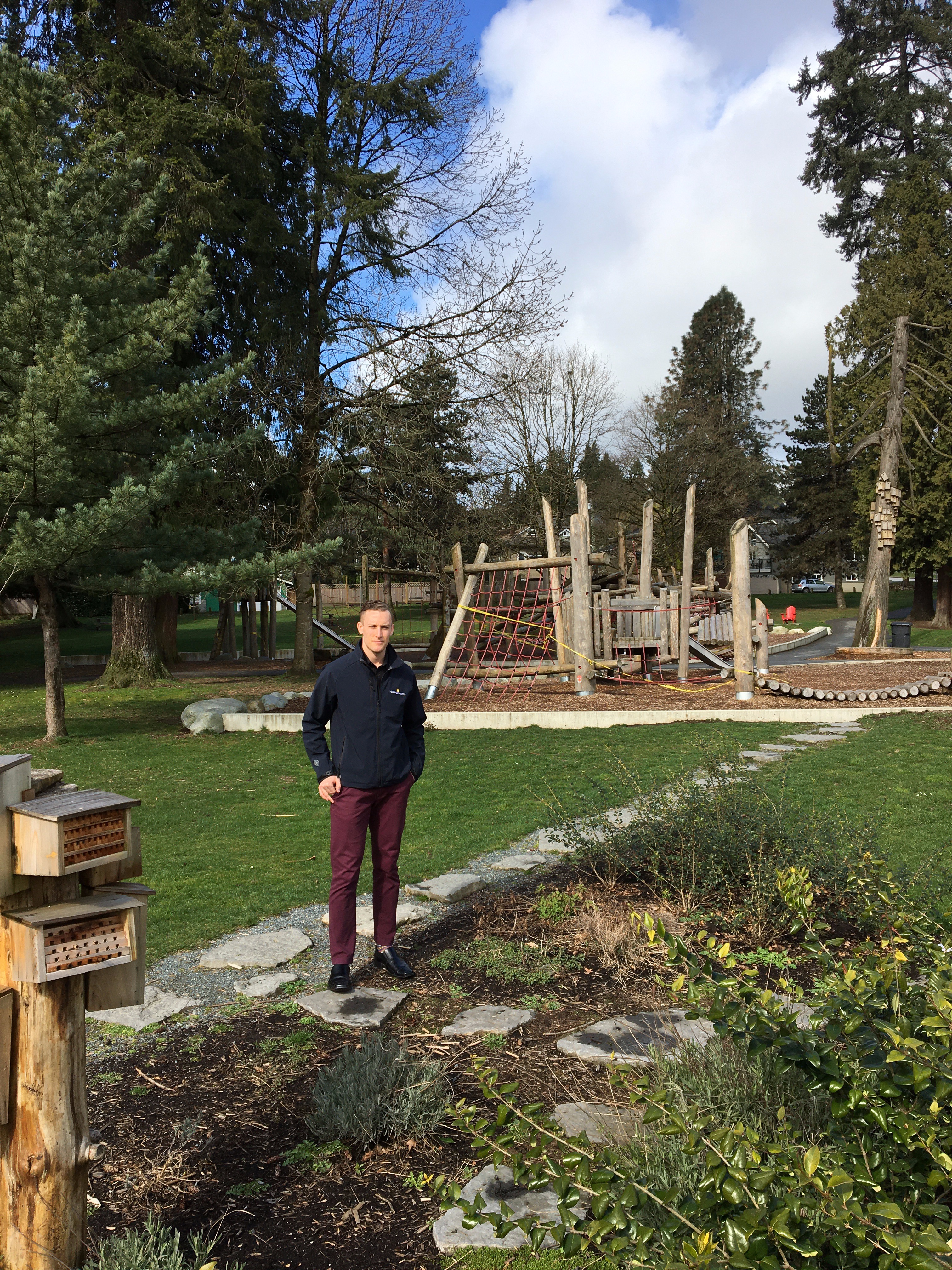
At Sapperton Park with the Natural Element Playground that Actualizes Outdoor Unstructured Play
References:
Brussoni, M., Olsen, L., Pike, I., Sleet, D. (2012). Risky Play and Children’s Safety: Balancing Priorities for Optimal Child Development. International Journal of Environmental Research and Public Health, 9, 3134. doi:10.3390/ijerph9093134
Canadian Public Health Association. (2018). Summary Report: Key Informant Interviews. Retrieved from https://www.cpha.ca/sites/default/files/uploads/resources/play/play-project-summary-key-informant-interviews.pdf
Family Fun Vancouver. (2017). Sapperton Park in New Westminster. Retrieved from https://www.familyfuncanada.com/vancouver/sapperton-park/
Help Me Grow. (n.d.). Why Unstructured Play is Important to Child Development. Retrieved from http://helpmegrowmn.org/HMG/HelpfulRes/Articles/WhyUnstructure/index.html
Framework for Recreation in Canada. (2015). Pathways to Wellbeing. Canadian Parks and Recreation Association. Retrieved from https://static1.squarespace.com/static/57a2167acd0f68183878e305/t/5926efacebbd1a74b7b584d8/1495723950196/Framework+For+Recreation+In+Canada_2016+w+citation.pdf
Larouche, R., Garriguet, D., Gunnell, K., Goldfield., Tremblay, M. (2016). Outdoor time, physical activity, sedentary time, and health indicators at ages 7 to 14: 2012/2013 Canadian Health Measures Survey. Retrieved from https://www150.statcan.gc.ca/n1/pub/82-003-x/2016009/article/14652-eng.htm
North Vancouver Recreation & Culture. (2017). The Value of Unstructured Play. Retrieved from
https://www.nvrc.ca/notices-events-blog/active-living-blog/value-unstructured-play
Parks and Recreation Magazine. (2017). Play Creates a Whole Child. Retrieved from https://www.nrpa.org/parks-recreation-magazine/2017/december/play-creates-a-whole-child/ (
Patte, M. (n.d.). The Decline of Unstructured Play. Retrieved from http://www.thegeniusofplay.org/TGOP/EA/2015_Articles/The_Decline_of_Unstructured_Play.aspx#.XkqqSC0ZM1I
The Outdoor Playbook. (2020). The Seven C’s. Retrieved from http://outdoorplaybook.ca/learn/play-research/the-7-cs/
Tremblay, M. S., Gray, C., Babcock, S., Barnes, J., Bradstreet, C. C., Carr, D., Chabot, G., Choquette, L., Chorney, D., Collyer, C., Herrington, S., Janson, K., Janssen, I., Larouche, R., Pickett, W., Power, M., Sandseter, E. B. H., Simon, B., & Brussoni, M. (2015). Position Statement on Active Outdoor Play. International Journal of Environmental Research and Public Health, 12(6), 6475–6505.
doi:10.3390/ijerph120606475
Why is it important for children (ages 5-12) to participate in outdoor recreation to aid in their health and development, and how can Recreation Programmers at Kitsilano War Memorial Community Centre promote, and encourage their participation in outdoor recreation? – Greg Paton
The benefits of outdoor recreation for children's health and development found through the secondary research process were not only physical, such as increased motor and movement skills and a decreased risk of obesity, but also cognitive and social, such as greater perception, reasoning, and communication skills. However, research also pointed out the risks of participation in outdoor recreation, as well as how parents’ fears that can lead to a participation barrier if they prevent their children from participating in outdoor recreation due to these fears. It is clear, however, that these fears should not justify avoidance of outdoor recreation, as doing so would take away the numerous health and development benefits mentioned above.
With this in mind, in order to answer the second part of the research question regarding how Recreation Programs at Kitsilano Community Centre can promote and encourage children’s (ages 5-12) participation in outdoor recreation, Programmers need to start by addressing parents’ safety concerns through outreach and communication regarding the risk management procedures that are taken in order to minimize and mitigate risks. These can be done through one on one conversations as well as surveys, the latter of which can also be used to try to determine what outdoor recreation programs children are interested in, since all of their current outdoor recreation program offerings centre around sports programs and day camps. This will allow them to reach a broader range of children who may not be interested in these programs. After addressing these safety concerns and diversifying the programs offered, Programmers can work on increasing the advertising of these programs, as well as communicating the benefits of outdoor recreation on children’s health and development in their advertising to further encourage and promote participation in outdoor recreation to children in the Kitsilano community. The the barrier of poor weather can be addressed by offering free hot drinks and free umbrella loans to parents and children to incentivize them to continue to participate in unstructured outdoor play at the community centre during days when it is cool or rainy. Implementing all of these suggestions, combined with an increased effort to engage children in the older 9-12 age group in outdoor recreation participation through equipment loaning and targeted program design based on the survey research, should enable Recreation Programmers at Kitsilano Community Centre to successfully promote and encourage outdoor recreation to children between the ages of 5-12.
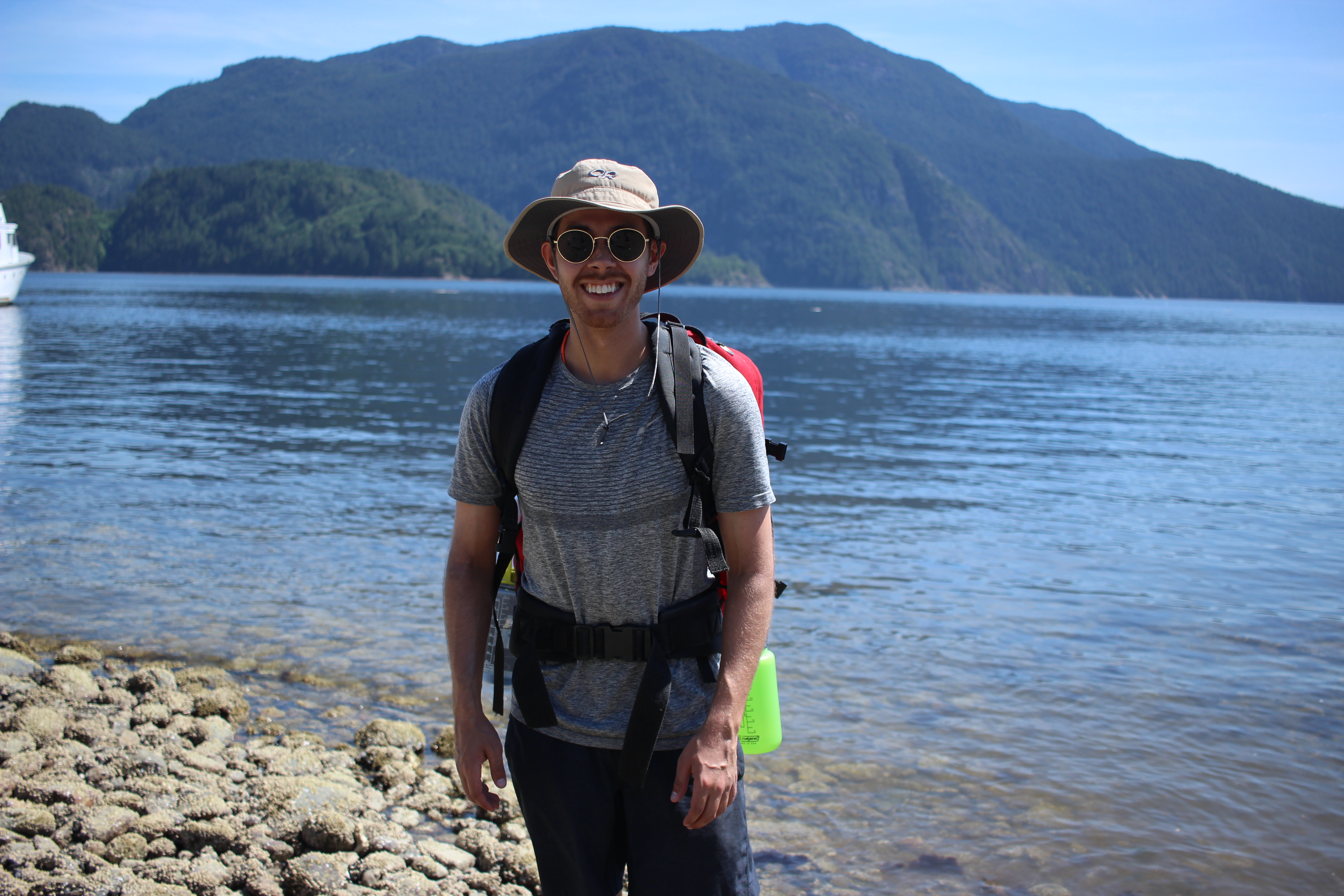
To protect their privacy, I couldn't include a photo with any children; however, this was prior to a canoe trip. We had a LOT of safety gear!
“How can the Recreation Programmers at Hamilton Community Centre increase social connectedness as the community transition into a larger community”. – Stephanie Reid
Community connection is essential to living a high quality of life. When residents connect within a community, they can showcase their uniqueness, share knowledge, and collaborate in a safe and secure community. By conducting this research provides a pathway into how recreational programmers can better support growing communities while maintaining and improving social connections where people reside within. Recreational programmers can support increasing social connection by learning and capturing the diversity within the communities, building community champions to give back and empower the community, and developing programs and services in spaces that naturally bring people together. The Hamilton community has a lot of opportunities for increasing social connections in the coming years through the completion of the mixed residential and commercial buildings. The Recreational Programmers can continue the community connectedness through working with the natural and built environments and continually connecting with the residents to develop a sense of identity as the area grows. The recommendation provided from this research highlights embracing cultural diversity, involving local community in workshops that foster community participation, utilizing various public outdoor space (placemaking) and capturing the local community through building resilient neighbourhoods to connect with the local community.
The photo attached is of me at the Hamilton Community Centre where my research was focused on. A neat aspect of the community centre is their "sensory pathway" which promotes physical literacy in the building. People of all ages can hop, skip, and jump in the hallways (you can see a green lily pad behind me).
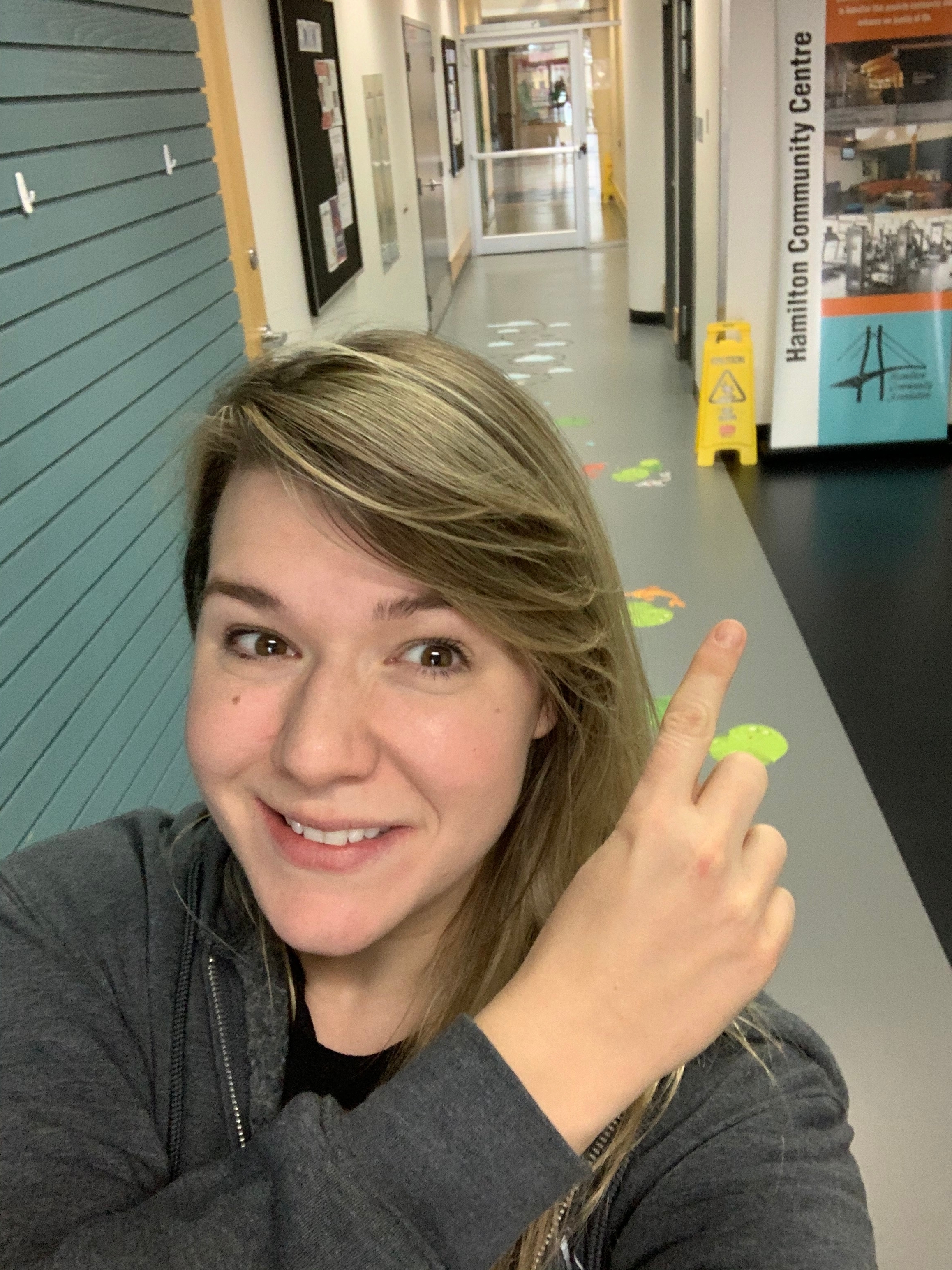
Why is it important for 9-12year olds to be active? How can North Vancouver Recreation and Culture Commission (NVRC) better serve this age group to support lifelong activity? – Suzanne Schmidt
This question can be answered in two parts. Firstly, it is important for children 9-12 years to be active for mental and physical health benefits (Telama, Yang, Viikari, Välimäki, Wanne, & Raitakari, 2005. In addition, Statistics Canada shows a decline in physical activity of children in Canada as shown by (Clark, 2014) and other studies stated that a decline in participation in physical activity starts for children at 9 years and accelerates in the teen years (Gardner, Vella, & Magee, 2016). To further demonstrate the importance of this age group being active, children 9-12 years are defined by Long-Term Development in Sport and Physical Activity 3.0 as the Learn to Train Stage and this the last stage before activity for life (Higgs, Way, Harber, Jurbala, & Balyi, 2019).
Six recommendations were made to NVRC to answer the second half of the research question above. These recommendations were made to build on the demonstrated commitment NVRC has shown for supporting activity in children in physical activity now and throughout their life. These recommendations were based on the ideas that developing physical activity skills builds confidence to participate in activity at all ages (Higgs, Way, Harber, Jurbala, & Balyi, 2019) and participating continuously builds a pattern to participate in the teen and adult years (Gardner, Vella, & Magee, 2016). To support skill development and continuous participation children need the opportunity to create and play in their sport/dance (Cairney, Clark, Dudley, & Kriellaars, 2019). There are many reasons to participate in physical activity, the two most common being fun and friendship, and these reasons should be considered when planning programs and services (Collins & Barcelona, 2018). The recommendations made to NVRC are: increasing communication for reasons to participate; increasing staff training; developing a NVRC wide process for information sharing and collaboration; offering more fun events that celebrate participation; a review of drop-in programs; and to look at ways to support t children to be active outside of NVRC through developing relationships.
It is hard right now to share a picture of a recreation centre gym or dance studio that supports children being active and activity for life. I have chosen the park across the street from my house to show this. Normally, this time of year McCartney Park would see the start of softball season and many girls 9-12 years and older practicing and playing.
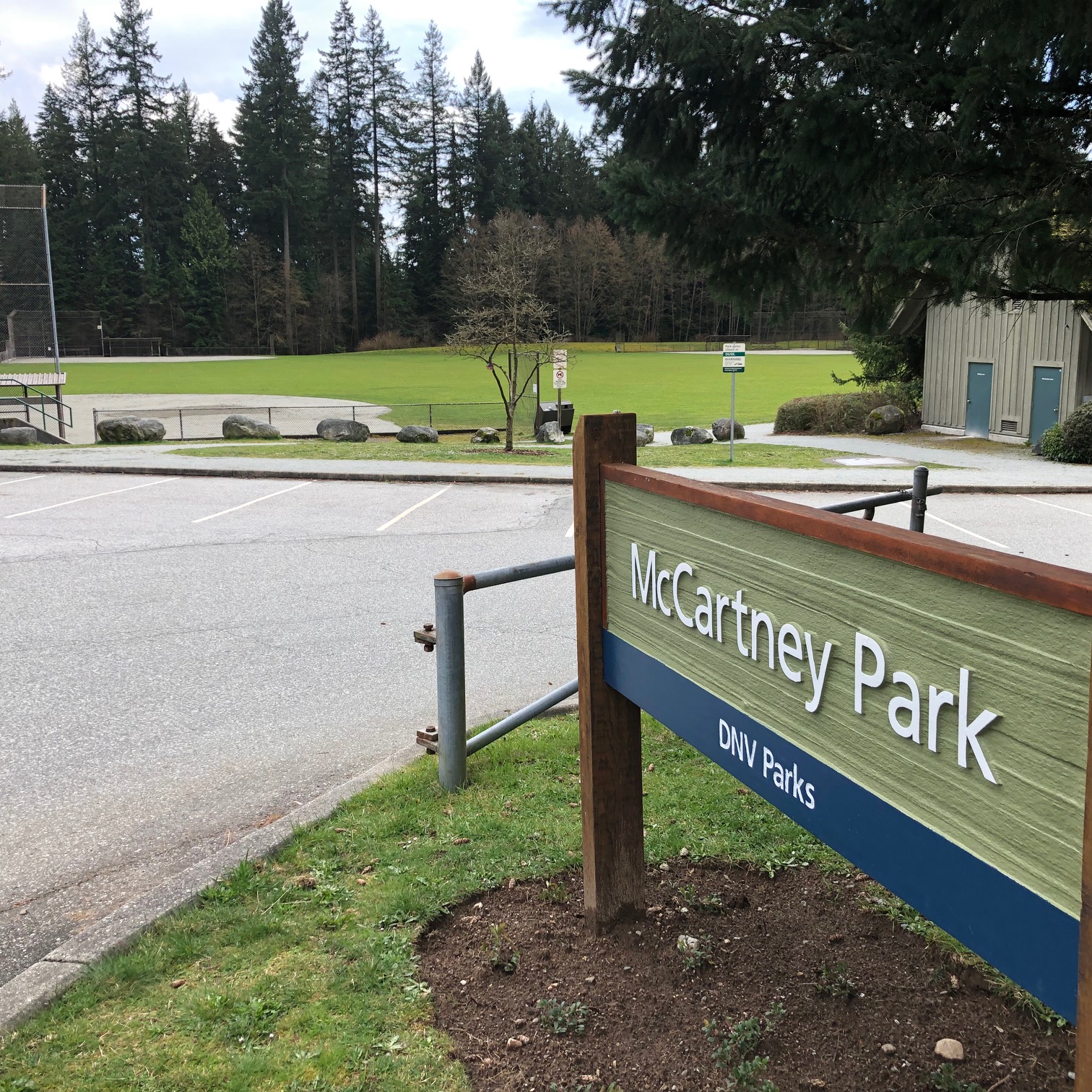
McCartney Park, North Vancouver, British Columbia. March 30, 2020.
References
Cairney, J., Clark, H., Dudley, D., & Kriellaars, D. (2019). Physical Literacy in Children and Youth—A Construct Validation Study. Journal of Teaching in Physical Education, 38(2), 84–90. doi: 10.1123/jtpe.2018-0270.
Clark, W. (2014, April 23). Kids Sports. Retrieved from Statistics Canada website https://www150.statcan.gc.ca/n1/pub/11-008-x/2008001/article/10573-eng.htm.
Collins, K., & Barcelona, R. (2018). Keep ‘Em Playing: Strategies for Building Positive Sport Experiences. Strategies: A Journal for Physical and Sport Educators, 31(5), 8–14. doi: 10.1080/08924562.2018.1490231.
Gardner, L. A., Vella, S. A., & Magee, C. A. (2016). Continued Participation in Youth Sports: The Role of Achievement Motivation. Journal of Applied Sport Psychology, 29(1), 17–31. doi: 10.1080/10413200.2016.1173744.
Higgs, C., Way, R., Harber, V., Jurbala, P., & Balyi, I. (2019) Long-Term Development in Sport and Physical Activity 3.0, Sport for Life Society. Retrieved from: https://sportforlife.ca/wp-content/uploads/2019/06/Long-Term-Development-in-Sport-and-Physical-Activity-3.0.pdf.
Telama, R., Yang, X., Viikari, J., Välimäki, I., Wanne, O., & Raitakari, O. (2005). Physical activity from childhood to adulthood: a 21-year tracking study. American Journal of Preventive Medicine, 28(3), 267–273.https://search-ebscohost-com.ezproxy.langara.ca/login.aspx?direct=true&db=mnh&AN=15766614&site=eds-live&scope=site.
What are the benefits of intergenerational programs for children and seniors, and how does senior volunteer engagement impact children in the City of Surrey’s MYzone afterschool program? – Sandip Gill
Intergenerational programs have a lot to offer for the children and seniors who participate in them. As there is a recognized generation gap between children and seniors, these programs are essential to help promote positive relationships between them to help bridge the generation gap. Many children do not get the opportunity to spend time with their grandparents due to various reasons, some of which may include not having grandparents, living far away from grandparents, or having grandparents that are sick or hospitalized. By partnering with the City of Surrey to study their MYzone afterschool program which is "a high quality, safe, inclusive, and fun afterschool program for children ages 8-12 that supports the principles of healthy child development by providing active play and recreation, homework support, social-emotional skill development, leadership building, peer and staff relationship development, and civic engagement development" (City of Surrey, n.d.), the researcher was able to examine the benefits and impacts of intergenerational programs which produced some key findings. In 2016, the City of Surrey was awarded funding from the Government of British Columbia and the City of Surrey to develop a strategy that will enable seniors in Surrey to share their skills, experiences, and wealth of knowledge. The City of Surrey used this initiative to implement the Seniors Volunteer Initiative / MYzone Pilot Project Program in 2019 at Newton Recreation Centre which is now in its second and final year of the pilot project, where a senior volunteer comes into the program once a week to interact with the children. Through intensive primary and secondary research, it has been proven that intergenerational programs offer a wide variety of benefits to both children and seniors in both the short-term and long-term. The benefits range from opportunities to exchange ideas and learn from one another, share knowledge, increased respect and understanding between generations, greater sense of belonging and acceptance, fostering a sense of community, reduced social isolation, and in children there is also improved academic performance. By interviewing City of Surrey staff and the senior volunteer, as well as observing the interactions in the MYzone afterschool program in person, it was clearly evident that the senior volunteer has a very positive influence on the children. The impact that senior volunteer engagement has on the children in the City of Surrey's MYzone afterschool program is that it leads to an increased positive attitude and perception towards seniors by seeing them and the idea of aging in a positive light, helps eliminate stereotypes or misconceptions that children may have about seniors and older adults, results in an increased willingness to interact with seniors, improves behaviours, and helps children do better at school. Research demonstrates that it is crucial for more intergenerational programs to be implemented in the City of Surrey, as this is currently the only regularly running intergenerational program at the moment, and it is only a pilot project; not a fully implemented program yet. This led to one of the recommendations being to implement the Seniors Volunteer Initiative / MYzone Pilot Project Program as an official program that runs on a regular basis throughout the year. Other recommendations for the City of Surrey include encouraging the senior volunteer to continue attending MYzone long-term, and modify and improve the existing pre-evaluation and post-evaluation system to get feedback on the program from children to hear their thoughts and opinions on what is working well, what isn't working well, and how they feel about having a senior volunteer in the program. Additional recommendations include implementing activities that align with the senior volunteer's interests and passions which they feel confident in leading, increasing the number of MYzone afterschool locations that have senior volunteer engagement so that more children can benefit from intergenerational interactions and then increasing the number of days per week that the senior volunteer attends, organizing more intergenerational special events, and having senior volunteers be a part of supporting children's day camps. Overall, throughout the research that was conducted, it is clear that senior volunteer engagement provides a role model for the children to look up to which positively impacts their behaviours, thoughts, and perspectives. Intergenerational programs assist in bridging the generation gap, and provide multiple benefits to children and seniors through many dimensions which include physically, socially, emotionally, and psychologically. They also help provide a sense of belonging, connectedness, and community which are important aspects within the field of recreation.
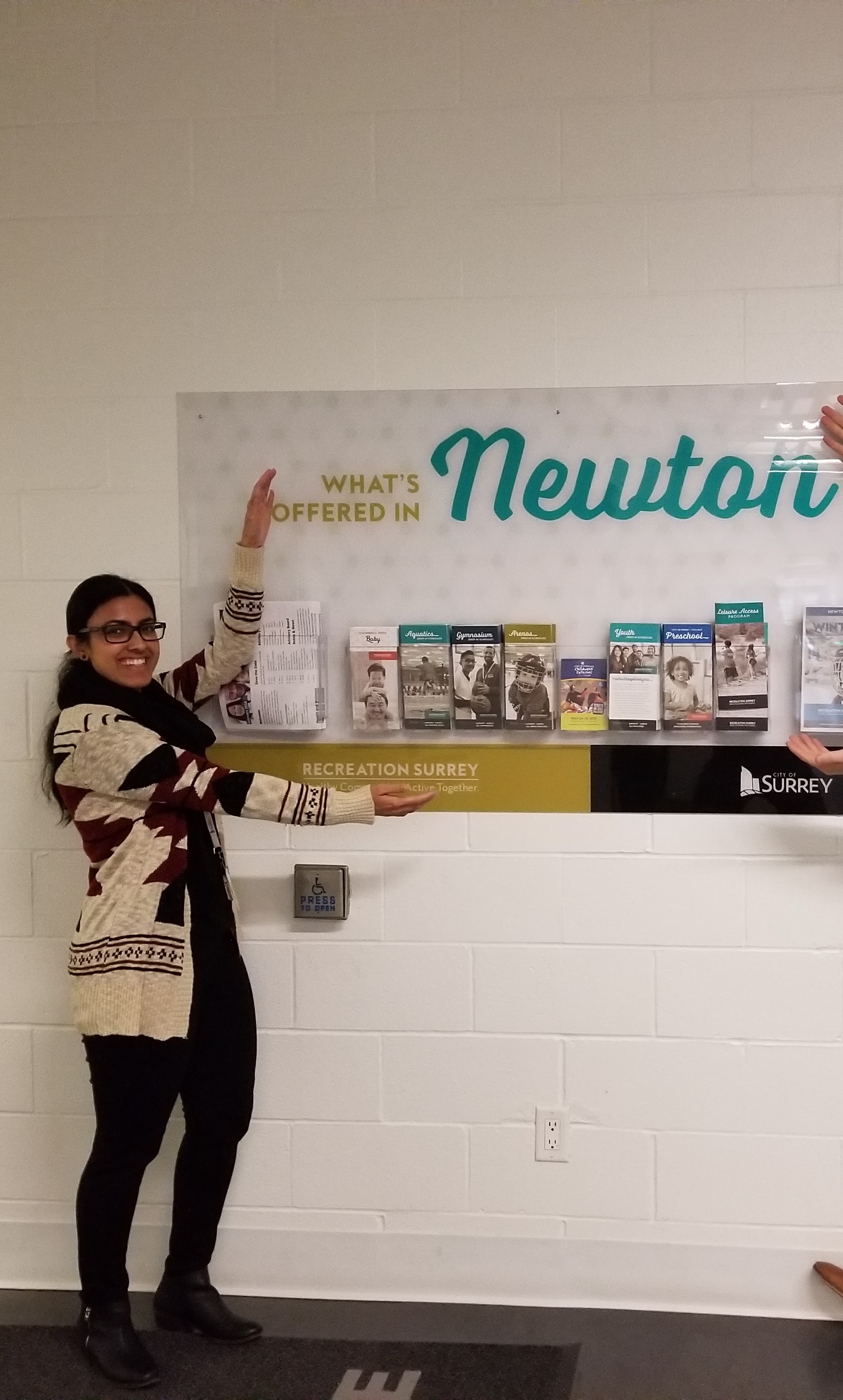
Due to privacy and photo consent reasons, I could not get a photo of the MYzone children or senior volunteer, but here's a photo of me at Newton Recreation Centre!
References:
City of Surrey. (n.d). 2017 Year in Review - Children & Youth Services - 0-18 Years. Retrieved from https://www.surrey.ca/files/0-18YearInReview2017.pdf
